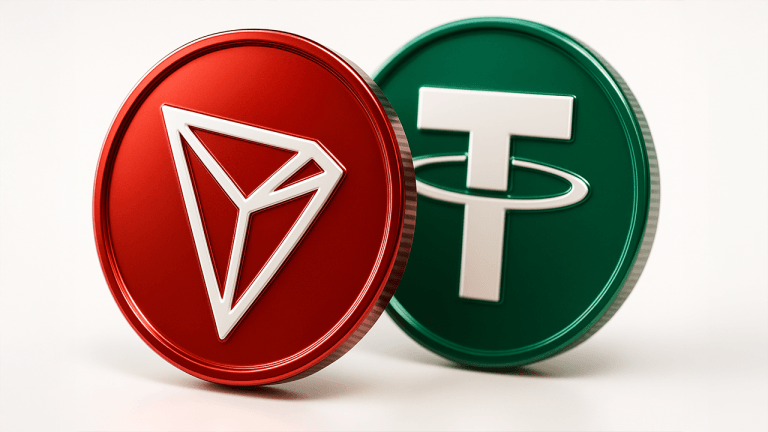Social media has permeated every aspect of our lives, yet worries about censorship, data ownership, and privacy have led to the emergence of decentralized social media platforms. These platforms, which give users control over their data and promote a more open and transparent digital environment, are based on blockchain technology and provide a new paradigm. The growing popularity of decentralized social media networks is examined in this article along with its revolutionary potential.
Centralized Social Media's Drawbacks
The handling of user data and the secrecy of its algorithms have long been criticized on centralized social media platforms. Users frequently have no choice over how their personal data is used for data monetization and targeted advertising. Furthermore, centralized platforms have a history of limiting or censoring content in accordance with corporate standards, which stifles freedom of speech. These worries have increased the desire for a social media experience that is more user-centric and privacy-focused.
Decentralization's Potential and Blockchain Technology
Blockchain-based decentralized social media networks are designed to remedy the shortcomings of their centralized equivalents. Decentralized social media is built on a transparent, secure, and tamper-proof infrastructure provided by blockchain. Blockchain gives people ownership and control over their personal data by eliminating the need for a single body to manage and control it.
Data Ownership and User Empowerment
User empowerment and data ownership are given priority in decentralized social media networks. Users can preserve control over their personal data by choosing what information to disclose and with whom through blockchain-based identity systems. By moving away from a platform-centric approach and toward a user-centric model, people are given greater control over their online identity, resulting in a more open and trustworthy connection between users and platforms.
Enhanced Security and Privacy
Blockchain's cryptography capabilities are used by decentralized social media networks to provide improved security and privacy. Data breaches and illegal access are less likely since user data is encrypted and distributed throughout a network of decentralized nodes. Additionally, the immutability of blockchain assures that user material cannot be changed or censored without network consensus, defending the freedom of expression.
Monetization of Content and Incentive Mechanisms
Social media platforms built on the blockchain present novel ideas for monetizing content and rewarding users. Creators can receive direct payment for their works of art, movies, or posts by using cryptocurrency and smart contracts. With the help of these incentive systems, value can be distributed more fairly because they cut out middlemen and provide content producers with the ability to get paid directly by their audience.
Mechanisms for Local Governance and Consensus
Decentralized social media systems frequently feature consensus and community governance processes, giving users a say in platform operations. Users can influence platform regulations, content moderation guidelines, and platform updates through voting processes or token-based systems. By ensuring that choices are taken collaboratively, this democratic method of governance promotes inclusivity and a sense of ownership among platform users.
Data Portability and Interoperability
Data portability and interoperability are prioritized by decentralized social media networks. Users' data and profiles can be seamlessly moved between other platforms, breaking vendor lock-in and expanding user options. Users can move platforms thanks to this interoperability without losing their social networks or previous content, encouraging healthy competition and innovation among decentralized platforms.
Resistance to Censorship and Free Expression
Decentralized social media networks are built on the fundamental idea of censorship resistance. These platforms lessen the possibility of censorship or content removal based on arbitrary policies by running on a decentralized network. Content that complies with moral and legal standards can flourish without being arbitrarily removed, promoting freedom of speech and intellectual variety.
Systems for Verification and Trust
To combat false information, spam, and centralized social media platforms, trust and verification methods are used.
These systems rely on the openness and consensus mechanisms of the blockchain to validate the veracity of data and user identities. Decentralized platforms encourage dependable and trustworthy content by adding reputation systems and user-driven moderation, enhancing the general quality of the social media experience.
The Path to Widespread Adoption
Decentralized social media platforms have many benefits, but they still have a long way to go before becoming widely used. These difficulties include:
- User Experience: In order to compete with the centralized platforms' fluid interfaces, decentralized platforms must put user experience first. To draw in mainstream users, enhancements to scalability, speed, and user-friendly interfaces are required.
- Network impact: For social media sites, the network impact is essential. Decentralized systems require a critical mass of users who can engage and interact with one another in order to take off. Marketing initiatives and strategic alliances might hasten this process.
- The regulatory environment for blockchain technology and cryptocurrencies is still developing. Decentralized social media sites must navigate and abide by pertinent laws in order to maintain sustainable growth and stay clear of potential legal snags.
- Education and Awareness: Blockchain technology and the idea of decentralized social media are still foreign to many people. Users must be informed about the advantages and potential of decentralized platforms in order for them to be widely used.
The Interoperability Issue
Decentralized social media platforms that operate on the blockchain have gained immense popularity over the past few years. These platforms offer users the opportunity to share information and communicate with others in a secure, transparent, and decentralized manner, without the intervention of centralized authorities. This is a revolutionary concept, and many blockchain-based social media platforms have been developed to cater to the growing demand for decentralized social media.
However, while these platforms are good in premise, they face a significant challenge in terms of interoperability. Interoperability refers to the ability of different blockchain networks to communicate with each other, exchange data and assets seamlessly, and work together to achieve common goals. This is a critical issue for decentralized social media platforms as they rely on a network of users and communities to share content and interact with each other.
The lack of interoperability among decentralized social media platforms means that users are limited in their ability to connect and share content across different platforms. This limits the potential reach and impact of their messages and reduces the overall effectiveness of these platforms in achieving their goals. Additionally, it creates silos of information and communities that are isolated from each other, which go against the very essence of decentralized social media platforms.
To address this issue, decentralized social media platforms must work towards building interoperability protocols that allow for seamless communication between different blockchain networks. This will enable users to connect and share information across different platforms, expanding the reach of their content and increasing the overall impact of these platforms.
One way to achieve interoperability among decentralized social media platforms is through the development of standardized protocols that allow for the exchange of data and assets across different networks. Examples include the InterPlanetary File System (IPFS), a decentralized protocol that allows for the storage and sharing of files across different networks, or the Cosmos Network, a blockchain network that enables interoperability between different blockchains, allowing for the exchange of data and assets across different networks.
Another approach to achieving interoperability among decentralized social media platforms is through the development of interoperability layers or bridges. These layers or bridges act as intermediaries between different networks, facilitating the exchange of data and assets between them. Polkadot is an excellent example of a blockchain network which acts as a bridging protocol, connecting different blockchain networks and enabling the exchange of data and assets between them.
Conclusion
A substantial change in the social media landscape is being brought about by the emergence of decentralized social media platforms based on blockchain technology. User empowerment, data ownership, privacy, and freedom of expression are given top priority on these platforms. Decentralized social media platforms provide a transformative solution to the shortcomings of centralized platforms by harnessing the transparency, security, and decentralized characteristics of blockchain. Even though there are still issues, the possibility of a more user-centric, open, and inclusive social media experience is attainable. The path to widespread acceptance of decentralized social media becomes clearer as more people become aware of its advantages, and the balance of power in the social media landscape is about to shift in favor of the users.
This article was written by Finance Magnates Staff at www.financemagnates.com.
You can get bonuses upto $100 FREE BONUS when you:
💰 Install these recommended apps:
💲 SocialGood - 100% Crypto Back on Everyday Shopping
💲 xPortal - The DeFi For The Next Billion
💲 CryptoTab Browser - Lightweight, fast, and ready to mine!
💰 Register on these recommended exchanges:
🟡 Binance🟡 Bitfinex🟡 Bitmart🟡 Bittrex🟡 Bitget
🟡 CoinEx🟡 Crypto.com🟡 Gate.io🟡 Huobi🟡 Kucoin.





Comments